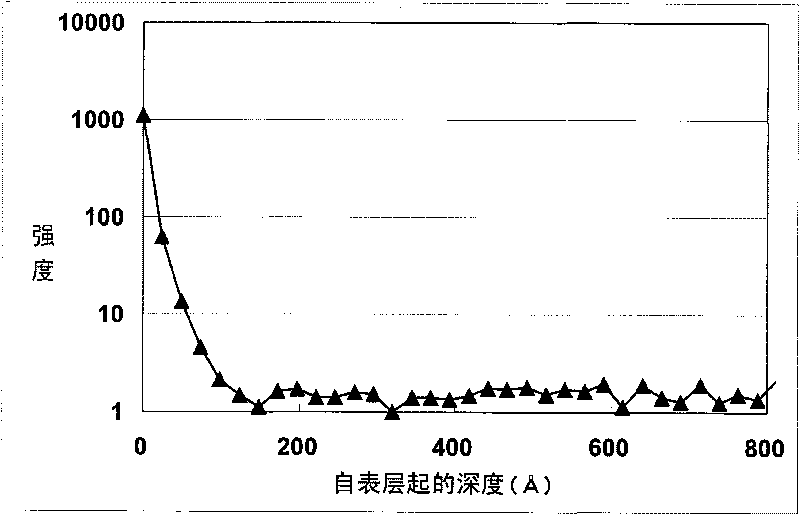Liquid crystal aligning agent, polyorganosiloxane, liquid crystal aligning film, forming method thereof and liquid crystal display element
A technology of polyorganosiloxane and liquid crystal alignment agent, which is applied in liquid crystal materials, chemical instruments and methods, optical mechanical equipment, etc., can solve the problems of pretilt angle performance decline and pretilt angle instability, and achieve excellent stability
- Summary
- Abstract
- Description
- Claims
- Application Information
AI Technical Summary
Problems solved by technology
Method used
Image
Examples
Synthetic example E-1
[0298] In the reaction vessel equipped with stirrer, thermometer, dropping funnel and reflux condenser, add 2-(3,4-epoxycyclohexyl) ethyltrimethoxysilane 100.0g, methyl isobutyl ketone 500g and 10.0 g of triethylamine were mixed at room temperature. Then, after adding 100 g of deionized water dropwise through the dropping funnel over 30 minutes, it was allowed to react at 80° C. for 6 hours while mixing under reflux. After the reaction, the organic layer was taken out, washed with 0.2% by weight of ammonium nitrate aqueous solution until the water after washing was neutral, and the solvent and water were distilled off under reduced pressure to obtain polyorganosiloxane with epoxy groups. (EPS-1) viscous transparent liquid.
[0299] The polyorganosiloxane (EPS-1) with epoxy group is carried out 1 In the H-NMR analysis, a peak due to the epoxy group of theoretical intensity was obtained around chemical shift (δ) = 3.2 ppm, and it was confirmed that no side reaction of the epox...
Synthetic example C-1
[0303] A cinnamic acid derivative (2-4-1) was synthesized according to Scheme 1 below.
[0304]
[0305] Synthetic route 1
[0306] Add 91.3g methyl 4-hydroxybenzoate, 182.4g potassium carbonate and 320ml N-methyl-2-pyrrolidone to a 1L eggplant-shaped flask, stir at room temperature for 1 hour, then add 99.7g 1-bromopentane , stirred at 100°C for 5 hours. After the reaction was completed, reprecipitation was performed with water. Then, 48 g of sodium hydroxide and 400 ml of water were added to the precipitate, and the hydrolysis reaction was carried out by refluxing for 3 hours. After completion of the reaction, it was neutralized with hydrochloric acid, and the resulting precipitate was recrystallized with ethanol to obtain 102 g of white crystals of compound (2-4-1-1).
[0307] 10.41 g of this compound (2-4-1-1) was taken into a reaction vessel, 100 ml of thionyl chloride and 77 μL of N,N-dimethylformamide were added thereto, and stirred at 80° C. for 1 hour. Then, thio...
Synthetic example C-2
[0310] In the above Synthesis Example C-1, except that 110.9 g of 1-iodo-4,4,4-trifluorobutane was used instead of 1-bromopentane, 9.2 g of the following was obtained in the same manner as in Synthesis Example C-1. A white crystal of a compound represented by formula (2-4-2) (cinnamic acid derivative (2-4-2)).
[0311]
PUM
| Property | Measurement | Unit |
|---|---|---|
| wavelength | aaaaa | aaaaa |
| surface tension | aaaaa | aaaaa |
| viscosity | aaaaa | aaaaa |
Abstract
Description
Claims
Application Information
 Login to View More
Login to View More - R&D
- Intellectual Property
- Life Sciences
- Materials
- Tech Scout
- Unparalleled Data Quality
- Higher Quality Content
- 60% Fewer Hallucinations
Browse by: Latest US Patents, China's latest patents, Technical Efficacy Thesaurus, Application Domain, Technology Topic, Popular Technical Reports.
© 2025 PatSnap. All rights reserved.Legal|Privacy policy|Modern Slavery Act Transparency Statement|Sitemap|About US| Contact US: help@patsnap.com



